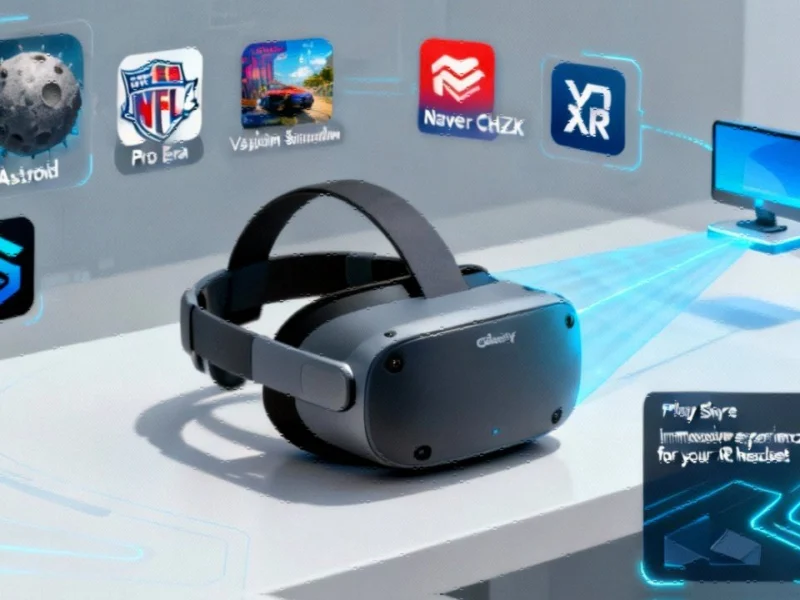Deepening Collaboration in .NET Ecosystem
The Uno Platform has significantly deepened its partnership with Microsoft, marking a strategic evolution in their collaborative efforts within the .NET ecosystem. As .NET 10 approaches its November release, this enhanced cooperation has already yielded tangible results, particularly in enabling MAUI support for Android 16. The collaboration represents a meaningful shift in how ecosystem partners are contributing to the core .NET platform’s advancement.
“We have always believed that .NET is the strongest foundation for delivering cross-platform applications, and we continue to rely on it at every layer of our product,” the Uno Platform team emphasized in their announcement. “This is why we are taking a more active role in contributing back, helping advance the ecosystem in areas where our expertise and use cases align with the .NET roadmap.”
Technical Integration and Android 16 Support
The recent collaboration focused on ensuring .NET MAUI’s compatibility with Android 16, requiring extensive engineering coordination between the two organizations. “This contribution took nearly one and a half months of tight collaboration between senior Uno Platform and .NET engineers on resolving issues together deep in the heart of .NET MAUI,” Uno Platform detailed in their statement.
The technical improvements encompassed multiple layers of the stack, including enhanced Java interop capabilities, refined Android tooling integration, smoother API alignment, and updated runtime support. These enhancements not only benefit MAUI developers but strengthen the entire .NET cross-platform development experience.
Microsoft’s Recognition and Future Directions
Microsoft formally acknowledged Uno Platform’s contributions in its .NET 10 Release Candidate 2 announcement, expressing gratitude for the “deep collaboration with the .NET MAUI team in preparation for .NET 10 RC2.” The technology giant noted that “This kind of partnership strengthens the .NET ecosystem and reflects our shared commitment to delivering high-quality, cross-platform developer experiences.”
Looking ahead, both companies have confirmed that their partnership will expand across additional areas of the .NET ecosystem, including SkiaSharp and the .NET runtime itself. This expanded collaboration comes at a time of significant industry developments in cross-platform development frameworks and tools.
Strategic Implications for Industrial Computing
For industrial computing professionals, this partnership signals important advancements in cross-platform capabilities that could influence future technology decisions. The Uno Platform’s expertise in delivering consistent user experiences across Windows, Mac, Linux, mobile, and web platforms aligns with industrial computing’s growing need for unified interfaces across diverse hardware environments.
As organizations navigate complex infrastructure decisions, the strengthened .NET ecosystem provides more robust options for developing industrial applications that can run consistently across different operating systems and device types. The enhanced partnership between Uno Platform and Microsoft, as detailed in this comprehensive coverage, represents a significant step forward in cross-platform development capabilities.
Broader Industry Context
This collaboration occurs alongside other major technology infrastructure initiatives that are reshaping how enterprises approach cross-platform development. The industrial computing sector particularly benefits from these advancements, as the need for reliable, consistent applications across varied hardware platforms remains a critical requirement.
The Uno Platform-Microsoft partnership demonstrates how ecosystem collaboration can accelerate the development of robust cross-platform solutions, potentially influencing how other technology partners approach similar challenges in the industrial computing space. As these market trends continue to evolve, the strengthened .NET ecosystem positions developers to better address the complex requirements of modern industrial applications.
With both companies committed to expanding their collaboration, the industrial computing community can anticipate further enhancements to cross-platform development capabilities that will support the next generation of industrial applications and interfaces.
This article aggregates information from publicly available sources. All trademarks and copyrights belong to their respective owners.
Note: Featured image is for illustrative purposes only and does not represent any specific product, service, or entity mentioned in this article.



